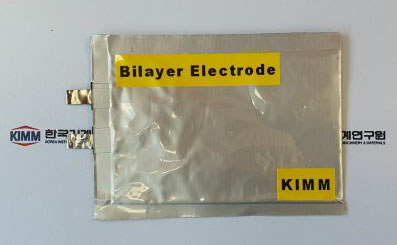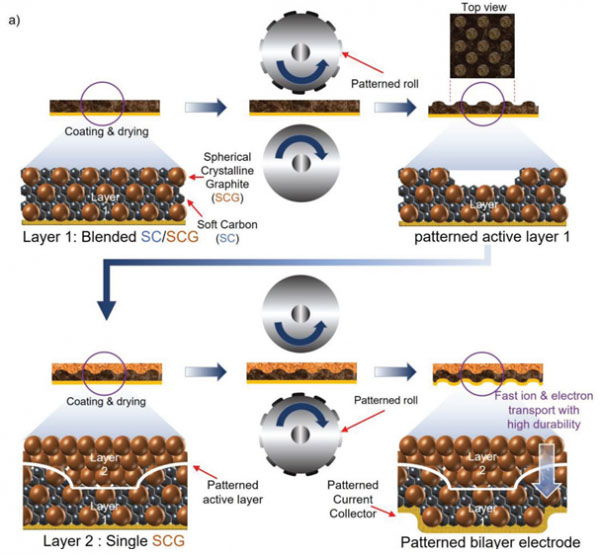| Jan 30, 2023 |
Electrode design for lithium-ion battery that improves smartphone, laptop battery performance
(Nanowerk News) Korea Institute of Machinery and Materials (KIMM) has announced the development of the design and process technology for the world's first battery electrode that significantly improves the performance and stability of batteries used in electronic devices such as smartphones, laptops, and electric vehicles.
|
|
A joint research team led by principal researcher Seungmin Hyun of the Department of Nano-Mechanics at the Korea Institute of Machinery and Materials, an institution under the jurisdiction of the Ministry of Science and ICT, and Professor Hoo-jeong Lee of Sungkyunkwan University (SKKU) have developed a new battery technology that uses an electrode (anode) structure that enhances the reliability and performance of traditional lithium-ion batteries.
|
|
The results of their research achievement were published in the journal Advanced Functional Materials ("Design Strategies toward High-Performance Hybrid Carbon Bilayer Anode for Improved Ion Transport and Reaction Stability").
|
 |
| A Bilayer Electrode battery in pouch form. (Image: KIMM)
|
|
In order to develop a design and process technology that maintains high performance and reliability even when the electrode of the lithium-ion battery is thick, the KIMM-SKKU joint research team formed a bilayered anode. Additionally, the anode is designed with grooves allowing small materials with improved ion conductivity and electrical conductivity to be placed between high-capacity materials
|
|
In general, lithium-ion battery electrodes are manufactured by coating and drying a slurry (A mixture of solids and liquids. Specifically, this refers to a mixture of active materials that chemically react to generate electrical energy when a battery is discharged, binders that are added for the structural stabilization of electrodes, and conductive materials that are added to improve electric conductivity) so that it can be evenly distributed over the entire electrode. As such, it is the uniformity of the slurry that determines the performance of battery. The thicker the electrode, the lower the energy density and uniformity, making it difficult to maintain performance in a high-power environment.
|
|
However, with the anode structure of this newly developed battery. Uniform reaction stability can be achieved while maintaining high energy density throughout the electrode, even if the electrode is thick. This is particularly helpful in improving the performance and lifespan of batteries.
|
 |
| Electrode (anode) with a grooved, patterned bilayer structure. (Image: KIMM)
|
|
Principal researcher Seungmin Hyun stated that this achievement is an efficient method to improve the performance and lifespan of batteries by applying a new design to traditional lithium-ion battery materials and processes. He added that the team will continue to make efforts to apply this new technology to electric vehicles and soft robots that require high energy density in high-power environments, as well as to electronic devices such as commercial smartphones and laptops.
|


